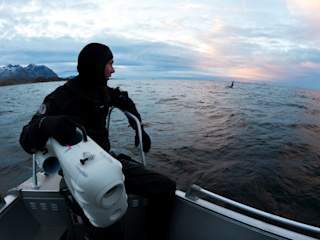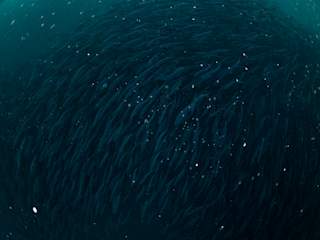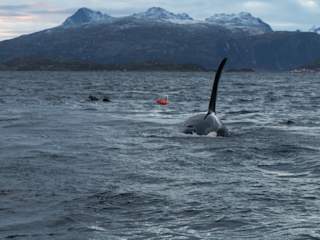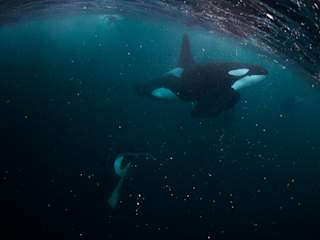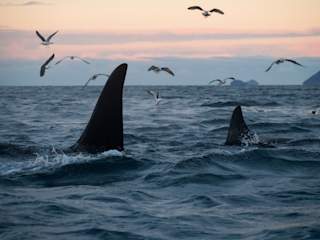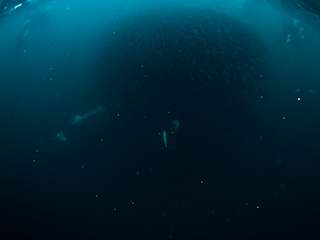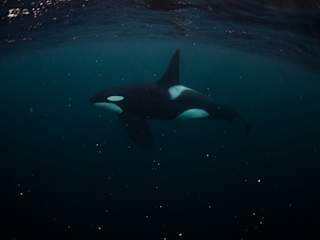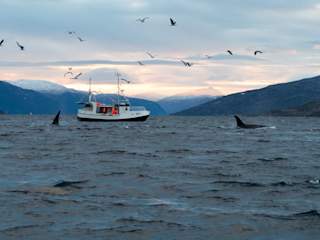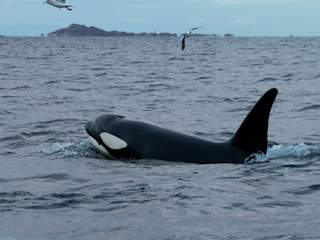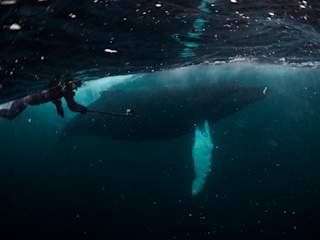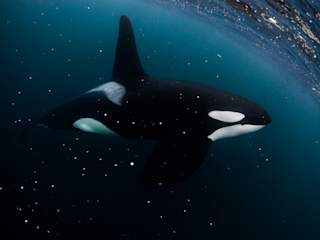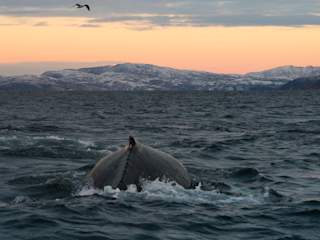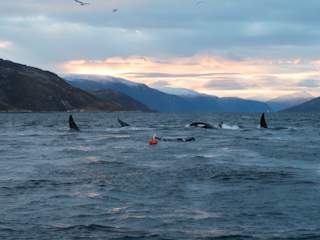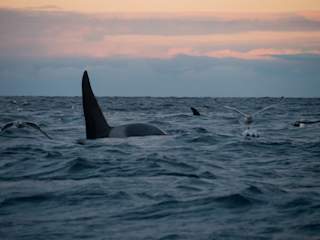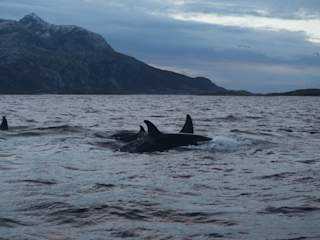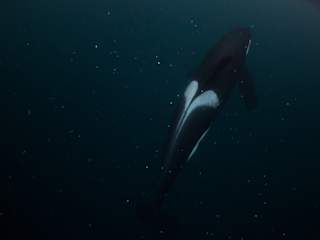Weather at 69 degrees north in November can be unpredictable to say the least. Our biggest concerns as we boarded the plane heading north was whether the forecast would hold. We tried not to get too high expectations, as wildlife encounters never can be guaranteed. Based on the frequent Facebook updates from my friend and skilled nature photographer Svein Aasjord, who lives in Kaldfjorden, the chances of seeing whales would be high.
Friday night was spent planning, studying maps, charging cameras and the Blueye PioneerOne drone, to get everything ready for an early morning start. The days are short in the north this time of year, so we left the small harbor in Kaldfjorden at dawn.
It probably didn’t take more than 20 minutes before we spotted the first massive dorsal fin of a male orca, raising more than a meter out of the water. Shortly after we found a large pod of orcas, moving effortlessly together at a steady pace heading further out the fjord. We decided to follow. Svein, having spent much time with the whales over the last few years, said that they were not yet in hunting mode.

Male and female swimming past followed by seagulls
As the orcas trap the herring against the surface the fish become accessible for the seagulls. Photo: Hege RøkenesAfter a while the whales disappeared. We contemplated whether they had traveled further out, or if they were going deeper to hunt. It didn’t take long before we got our answers. Orcas started appearing around the boat, swimming seemingly in random directions. Shortly after hundreds of herrings started jumping franticly out of the water, trying to escape the orcas chasing them from below.
The technique used by the orcas in this area of the north-east Atlantic is to separate a smaller part of the school, called a bait ball. After separating the school into a manageable bait ball, they herd the herring up from the deep to trap them against the surface leaving them nowhere to escape. From above seagulls and eagles start swooping down catching the fish. The whales take turns slapping their tailfin into the bait ball, stunning herrings before carefully picking and eating them one by one.
Svein navigated the boat upstream from the feeding action, and Hege and I got ready in our dry suites and slipped into the water.
The sight that met us under water was breathtaking. In all directions orcas where moving around the bait ball keeping it together preventing the herring from escaping.
The sight under water was breathtaking. In all directions orcas where moving around the bait ball.

Males and females, young and old, working together taking turns feeding or keeping the herring gathered. We could hear the constant clicking sound of the orcas communicating. Marine biologists studying orcas have named this well-known behavior carousel feeding.
I completely lost track of time, and it’s hard to tell how long the feeding activity lasted. I would guess more than an hour. Over the two days we got multiple encounters with both orcas and humpback whales.
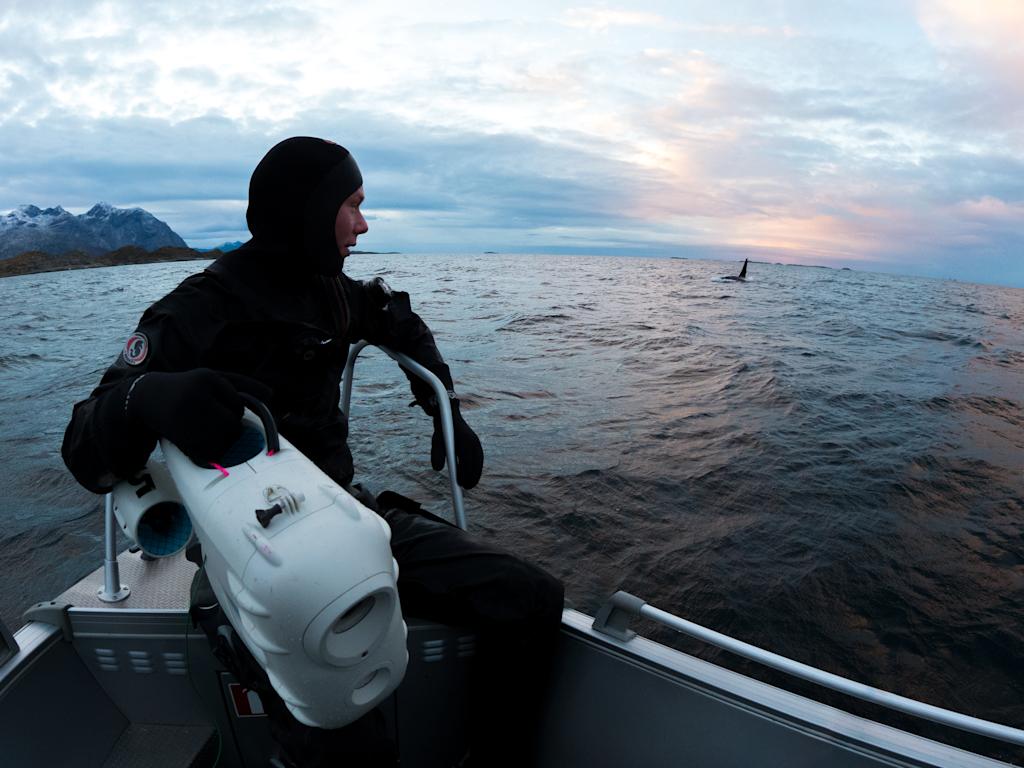
We got to test the Bluetye PioneerOne in rough conditions with swell and strong currents, and managed to use the drone to film a pod of orcas herding a large school of herring.
I’m truly excited about how Blueye will provide more people with eyes below the surface, and a chance to witness spectacular natural events like this themselves.

